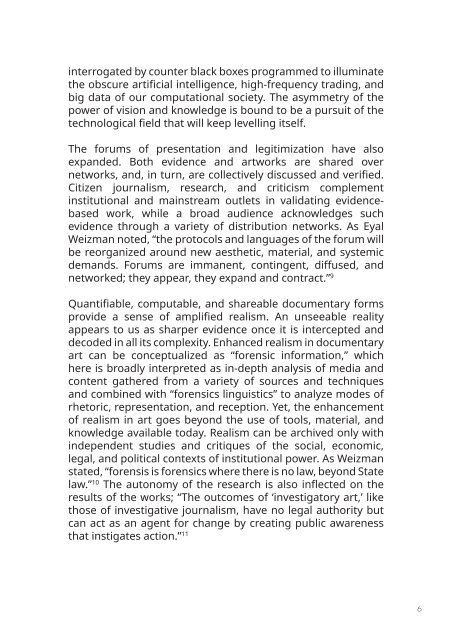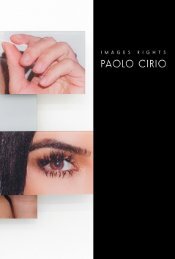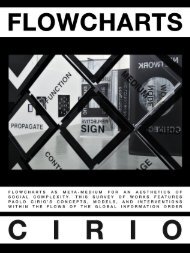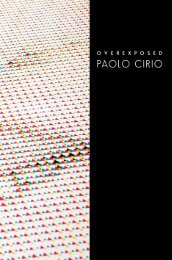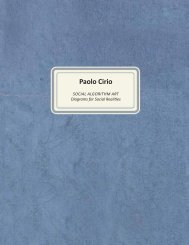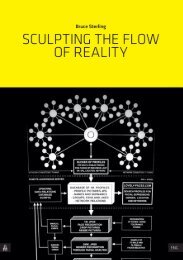Evidentiary Realism
Curated and Edited by Paolo Cirio, this publication features artists engaged in investigative, forensic, and documentary art. Artists: Sadie Barnette, Josh Begley, James Bridle, Ingrid Burrington, Harun Farocki, Navine G. Khan-Dossos, Hans Haacke, Jenny Holzer, Khaled Hafez, Mark Lombardi, Kirsten Stolle, Thomas Keenan & Eyal Weizman. Essays by Lauren van Haaften-Schick, Jaroslav Andel, Heather Davis, Joshua Craze, Mary Anne Redding, Natasha Hoare, Nicola Trezzi, Nijah Cunningham, Sampada Aranke, Susan Schuppli, Susanne Leeb, Aude Launay, Blanca de la Torre, Giulia Bini, Susette Min, and Paolo Cirio.
Curated and Edited by Paolo Cirio, this publication features artists engaged in investigative, forensic, and documentary art.
Artists:
Sadie Barnette, Josh Begley, James Bridle, Ingrid Burrington, Harun Farocki, Navine G. Khan-Dossos, Hans Haacke, Jenny Holzer, Khaled Hafez, Mark Lombardi, Kirsten Stolle, Thomas Keenan & Eyal Weizman.
Essays by Lauren van Haaften-Schick, Jaroslav Andel, Heather Davis, Joshua Craze, Mary Anne Redding, Natasha Hoare, Nicola Trezzi, Nijah Cunningham, Sampada Aranke, Susan Schuppli, Susanne Leeb, Aude Launay, Blanca de la Torre, Giulia Bini, Susette Min, and Paolo Cirio.
- No tags were found...
Create successful ePaper yourself
Turn your PDF publications into a flip-book with our unique Google optimized e-Paper software.
interrogated by counter black boxes programmed to illuminate<br />
the obscure artificial intelligence, high-frequency trading, and<br />
big data of our computational society. The asymmetry of the<br />
power of vision and knowledge is bound to be a pursuit of the<br />
technological field that will keep levelling itself.<br />
The forums of presentation and legitimization have also<br />
expanded. Both evidence and artworks are shared over<br />
networks, and, in turn, are collectively discussed and verified.<br />
Citizen journalism, research, and criticism complement<br />
institutional and mainstream outlets in validating evidencebased<br />
work, while a broad audience acknowledges such<br />
evidence through a variety of distribution networks. As Eyal<br />
Weizman noted, “the protocols and languages of the forum will<br />
be reorganized around new aesthetic, material, and systemic<br />
demands. Forums are immanent, contingent, diffused, and<br />
networked; they appear, they expand and contract.” 9<br />
Quantifiable, computable, and shareable documentary forms<br />
provide a sense of amplified realism. An unseeable reality<br />
appears to us as sharper evidence once it is intercepted and<br />
decoded in all its complexity. Enhanced realism in documentary<br />
art can be conceptualized as “forensic information,” which<br />
here is broadly interpreted as in-depth analysis of media and<br />
content gathered from a variety of sources and techniques<br />
and combined with “forensics linguistics” to analyze modes of<br />
rhetoric, representation, and reception. Yet, the enhancement<br />
of realism in art goes beyond the use of tools, material, and<br />
knowledge available today. <strong>Realism</strong> can be archived only with<br />
independent studies and critiques of the social, economic,<br />
legal, and political contexts of institutional power. As Weizman<br />
stated, “forensis is forensics where there is no law, beyond State<br />
law.” 10 The autonomy of the research is also inflected on the<br />
results of the works; “The outcomes of ‘investigatory art,’ like<br />
those of investigative journalism, have no legal authority but<br />
can act as an agent for change by creating public awareness<br />
that instigates action.” 11<br />
6


